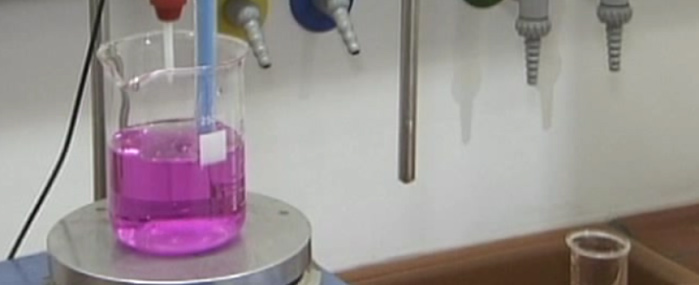
Direct Links:
Cooling
The simplest way is to use an ice/water mixture, which maintains a temperature of 0 °C. The temperature can be dropped to -10 to -15 °C by adding sodium chloride.
Lower temperatures can be achieved by using a slurry of dry ice and an organic solvent. The dry ice is crushed and placed in a dewar vessel. Now Ethanol can be poured in slowly. Since the dry ice is used up fast, it has to be refilled periodically. The flask can now be placed in the cooling bath, which is -78 °C cold.
If the above mentioned temperaturet do not meet the requirements, a cryostatic temperature regulator can be used. The coolant can reach temperatures down to -80 °C. The reaction takes place in a double-walled glass flask, the reactor, where the coolant flows through the space between the walls. The cap of the reactor has three entrances for different laboratory equipment, such as thermometer or stirrer. To use the cryostat a temperature is set and it is turned on. The hoses for the coolant have to be fixed to the reactor and secured with a clamp. The circulation of the coolant is started by opening the plug valve and pulling off the lever. Now the coolant flows through the reactor.